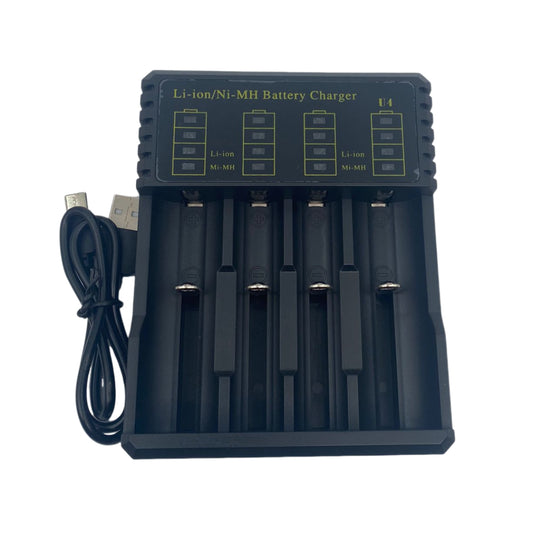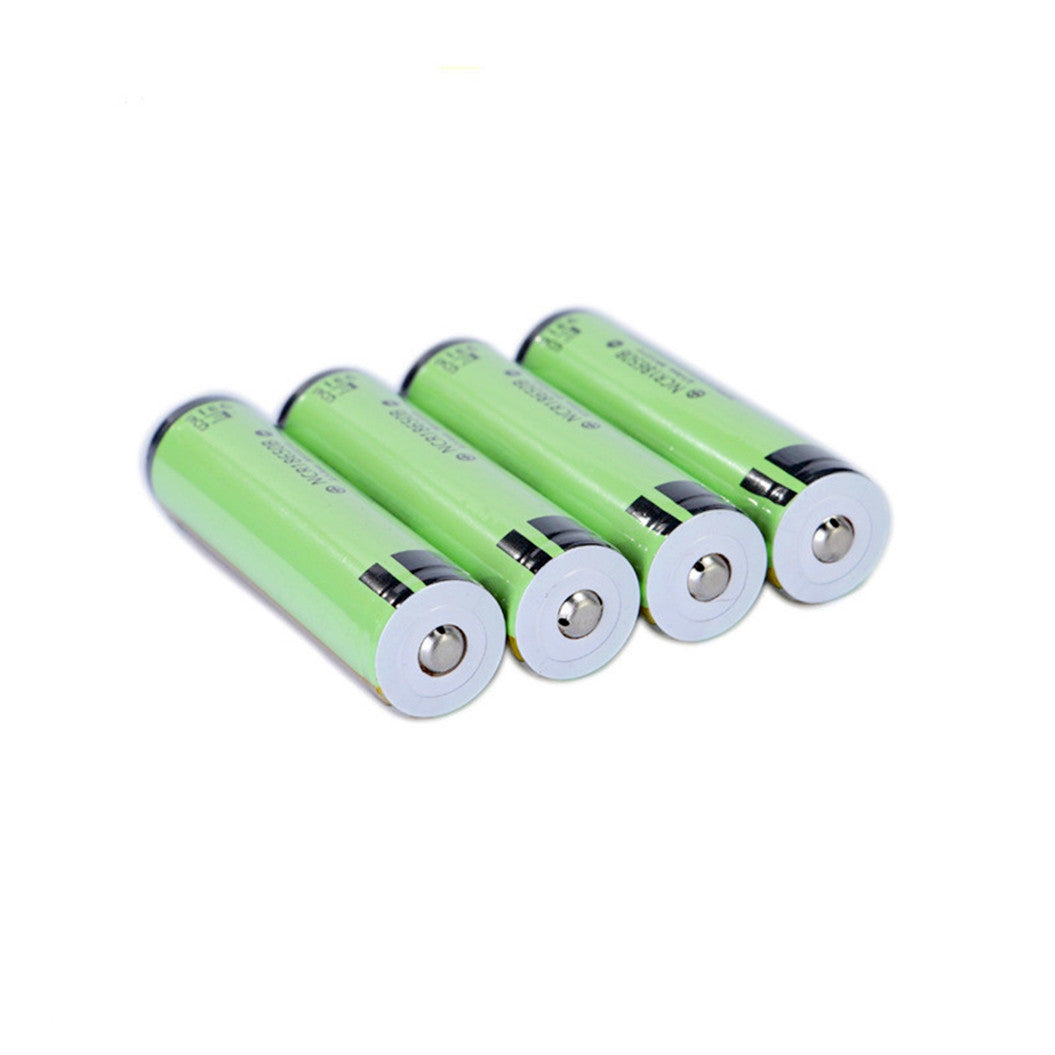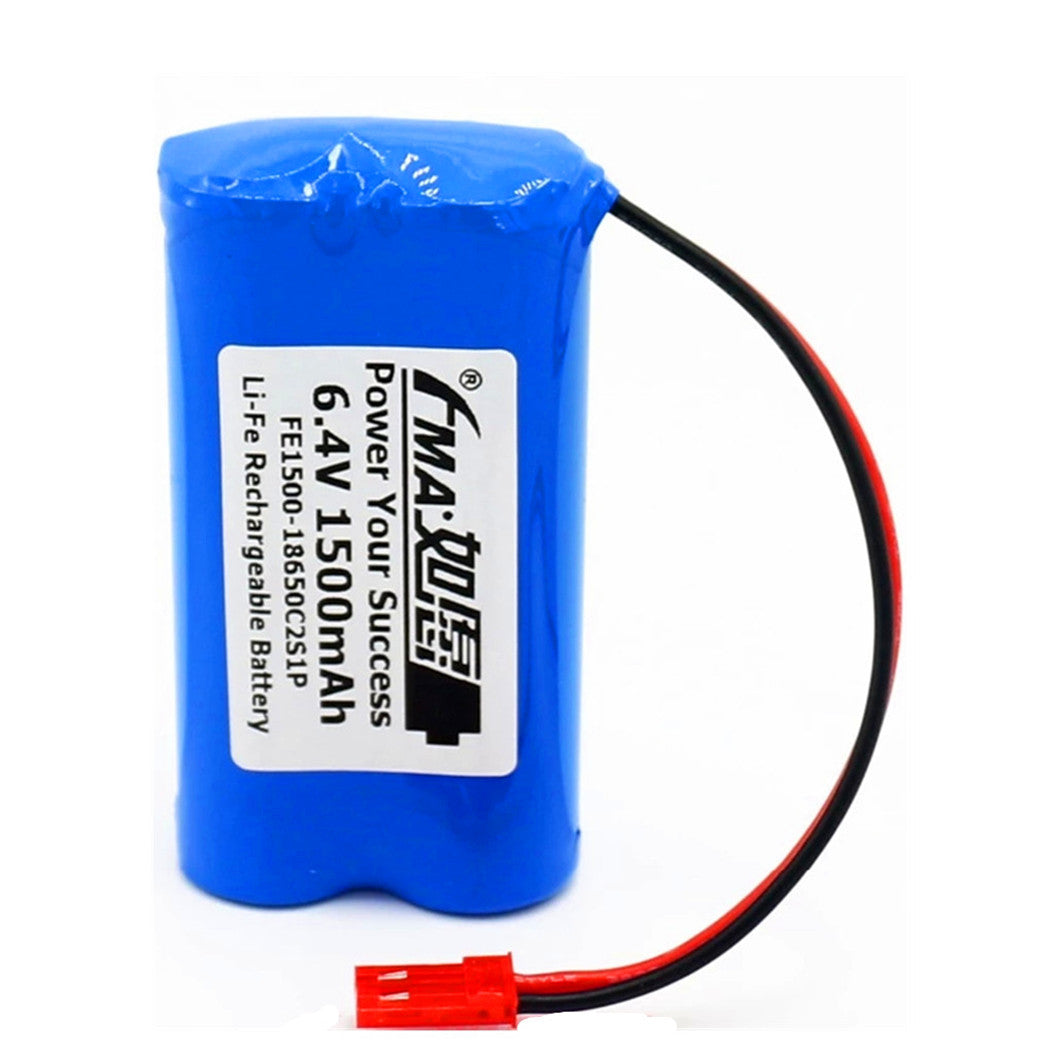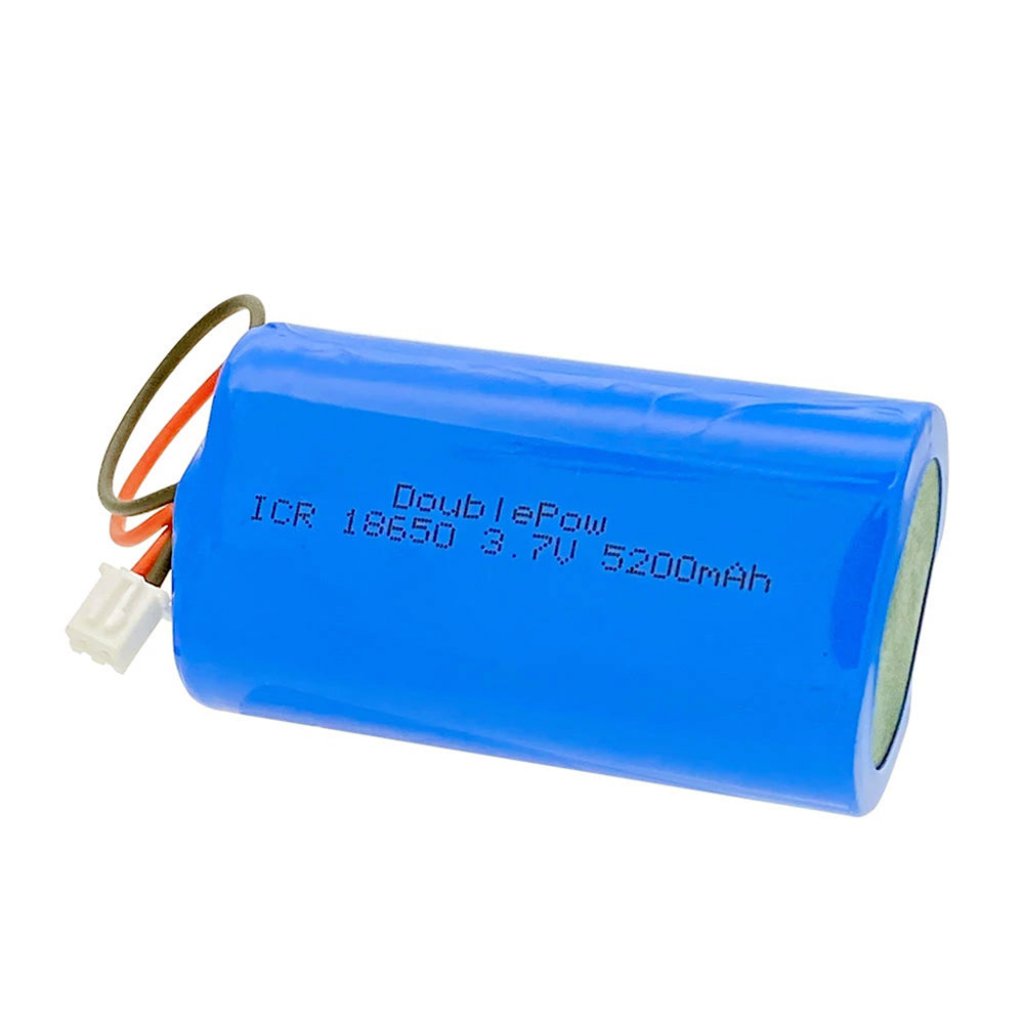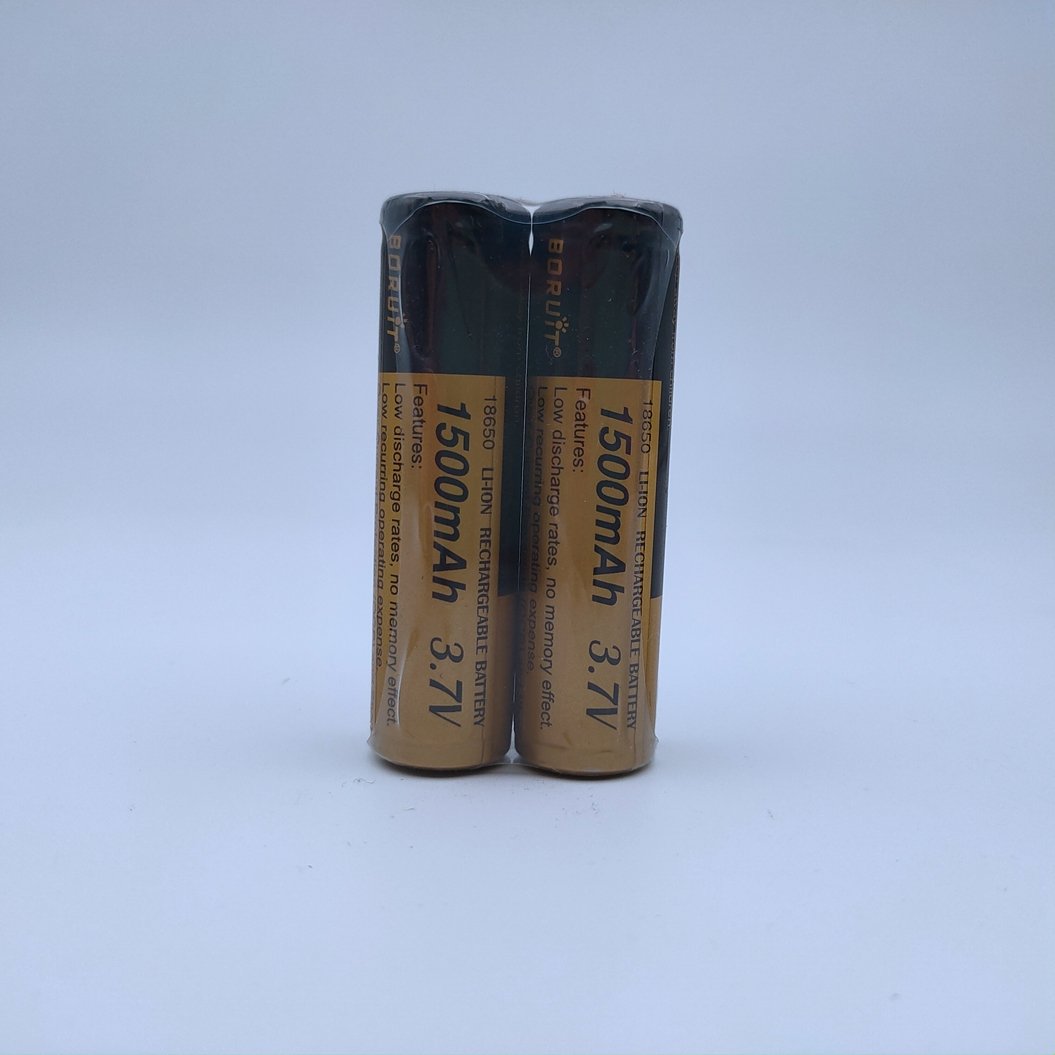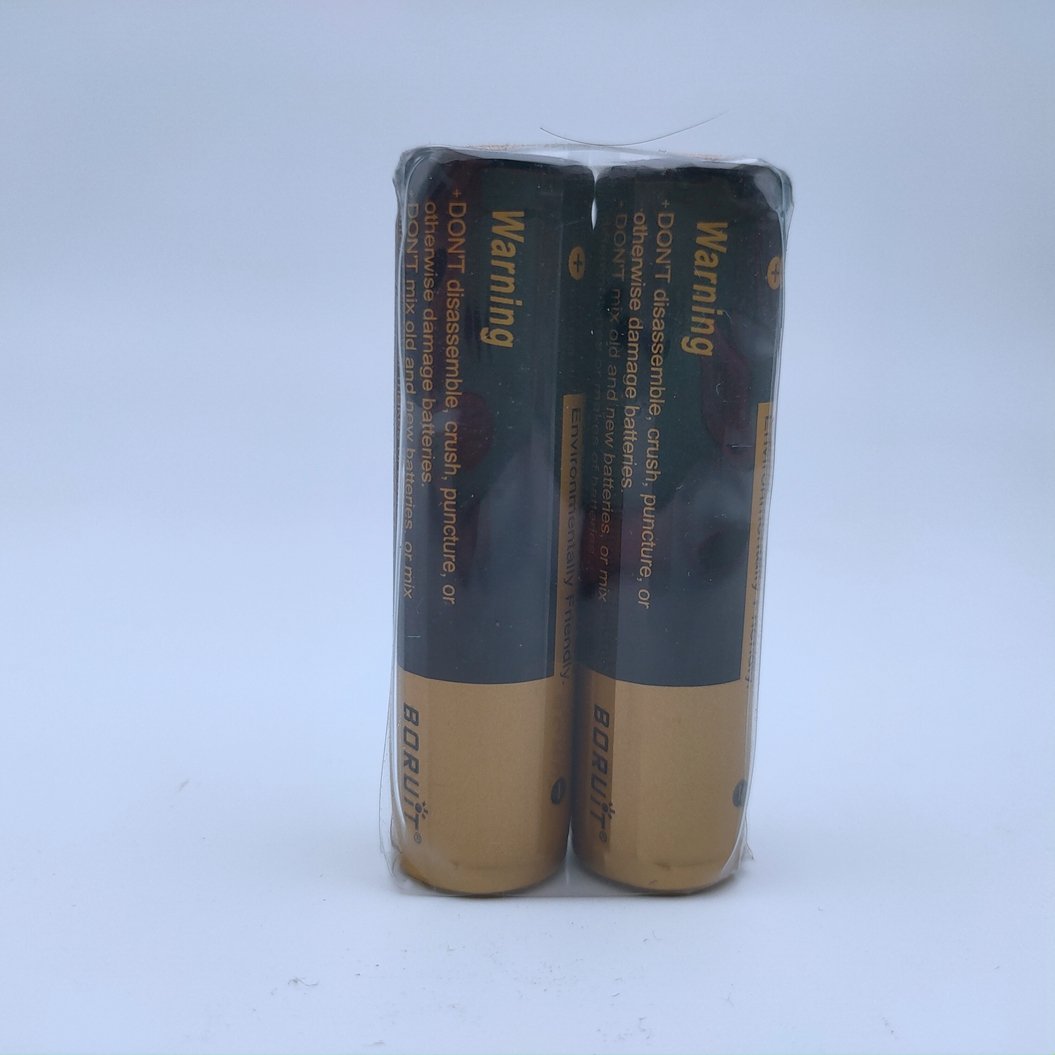-
Proveedor:BATTERYINT
Paquete de batería de iones de litio 18650 3,7 V 6000 mAh 1S 3P con cables
- Precio habitual
- $12.99
- Precio habitual
-
- Precio de venta
- $12.99
- Precio unitario
- por
Paquete de batería de iones de litio 18650 de ... -
Proveedor:BATTERYINT
Batería de litio 18650 de 7,4 V, 3600 mAh, paquete de baterías, placa de protección de altavoz con conector XH 2,54-2P
- Precio habitual
- $21.90
- Precio habitual
-
- Precio de venta
- $21.90
- Precio unitario
- por
Batería de litio 18650 de 7,4 V, 3600 mAh, paqu... -
Proveedor:BATTERYINT
2 baterías de iones de litio 18650 con protección superior plana de 3000 mAh y 20 A INR18650-30Q
- Precio habitual
- $12.89
- Precio habitual
-
- Precio de venta
- $12.89
- Precio unitario
- por
2 baterías de iones de litio 18650 con protecci... -
Proveedor:BATTERYINT
4 piezas de batería de iones de litio 18650 recargable protegida de 3,7 V y 3400 mAh
- Precio habitual
- $21.99
- Precio habitual
-
- Precio de venta
- $21.99
- Precio unitario
- por
4 piezas de batería de iones de litio 18650 rec... -
Proveedor:BATTERYINT
2 piezas de batería de polímero de litio 18650 de 3,7 V y 1500 mAh para aviones RC
- Precio habitual
- $14.00
- Precio habitual
-
- Precio de venta
- $14.00
- Precio unitario
- por
2 piezas de batería de polímero de litio 18650... -
Proveedor:BATTERYINT
Batería DIY 18650 6,4 V 1500 mAh para transmisor RC XG8, conector SYP 2S1PB
- Precio habitual
- $23.49
- Precio habitual
-
- Precio de venta
- $23.49
- Precio unitario
- por
Batería DIY 18650 6,4 V 1500 mAh para transmis... -
Proveedor:BATTERYINT
INR21700 50E 5000mAh máx. 15A 3,6-3,7 voltios 21,25x70,8mm
- Precio habitual
- $7.99
- Precio habitual
-
- Precio de venta
- $7.99
- Precio unitario
- por
INR21700 50E 5000mAh máx. 15A 3,6-3,7 voltios 2... -
Proveedor:BATTERYINT
Baterías de litio de 3,7 V 18650 5200 mAh para pesca, luz LED, altavoz Bluetooth, enchufe XH-2P
- Precio habitual
- $11.99
- Precio habitual
-
- Precio de venta
- $11.99
- Precio unitario
- por
Baterías de litio de 3,7 V 18650 5200 mAh para... -
Proveedor:BATTERYINT
Batería de litio LiitoKala de 3,7 V, 5200 mAh, 18650, luz LED para pesca, altavoz Bluetooth, baterías de emergencia de 4,2 V para bricolaje + enchufe 2P
- Precio habitual
- $19.90
- Precio habitual
-
- Precio de venta
- $19.90
- Precio unitario
- por
Batería de litio LiitoKala de 3,7 V, 5200 mAh,... -
Proveedor:BATTERYINT
2 piezas 1200 mAh 3,7 V 16500 batería de iones de litio 17500 batería de iones de litio para afeitadora eléctrica con linterna
- Precio habitual
- $8.99
- Precio habitual
-
- Precio de venta
- $8.99
- Precio unitario
- por
2 piezas 1200 mAh 3,7 V 16500 batería de iones ... -
Proveedor:BATTERYINT
Batería de iones de litio de 3,7 V y 2500 mAh para herramientas eléctricas, modelos de aviones y autoequilibrio
- Precio habitual
- $9.90
- Precio habitual
-
- Precio de venta
- $9.90
- Precio unitario
- por
Batería de iones de litio de 3,7 V y 2500 mAh ... -
Proveedor:BATTERYINT
2 baterías de litio BORUiT 18650 3,7 V 1500 mAh para linterna frontal con PCB
- Precio habitual
- $12.99
- Precio habitual
-
- Precio de venta
- $12.99
- Precio unitario
- por
2 baterías de litio BORUiT 3,7 V 1500 mAh 1865...
Demostración 13 -24 de 90 elementos
1. ¿Cuánto dura la batería de una luz LED antes de tener que reemplazarla?
La vida útil de una batería de luz LED varía según el tipo de batería y los patrones de uso. En el caso de las baterías de linternas recargables típicas, puede esperar que duren varios cientos de ciclos de carga, mientras que las baterías de linternas desechables estándar pueden durar unos meses con un uso moderado. Las baterías de lámparas LED que se usan con frecuencia se agotan más rápido, por lo que es importante controlar el rendimiento y reemplazar o recargar la batería cuando comienza a perder carga más rápidamente.
2. ¿Puedo utilizar baterías recargables en mi linterna LED?
Sí, la mayoría de las linternas LED son compatibles con pilas recargables para linternas, que no solo son económicas sino también respetuosas con el medio ambiente. Estas pilas recargables suelen ofrecer mayores capacidades y pueden cargarse cientos de veces antes de tener que reemplazarlas. Asegúrese de comprobar si la pila de su linterna o lámpara LED específica requiere un tipo particular de pila recargable, ya que algunas pueden ser compatibles solo con determinados tamaños o composiciones químicas.
3. ¿Cómo puedo saber si es necesario reemplazar la batería de mi linterna?
Sabrá que es hora de reemplazar la batería de su linterna si la luz LED comienza a atenuarse significativamente o parpadea durante el uso. Además, si las baterías recargables de su linterna tardan más en cargarse o mantienen la carga durante un período mucho más corto, es posible que sea hora de reemplazarlas. Verificar regularmente el rendimiento de la batería garantiza que su luz LED siga siendo confiable, ya sea una linterna o una lámpara LED.
4. ¿Cuánto tiempo se tarda en cargar las baterías recargables de una linterna?
Los tiempos de carga de las baterías recargables de las linternas dependen de la capacidad de la batería y del cargador utilizado. En promedio, puede llevar entre 2 y 5 horas cargar por completo una batería de luz LED estándar. Hay cargadores más rápidos disponibles, pero es importante asegurarse de que el cargador sea compatible con la batería de la linterna para evitar dañar la batería o reducir su vida útil. Las prácticas de carga son cruciales para mantener la longevidad de las baterías de luz LED.
5. ¿Todas las baterías de las linternas son del mismo tamaño?
No, flashlight batteries come in various sizes, including AA, AAA, C, D, and specialized lithium-ion batteries for high-performance LED flashlights. It’s essential to use the correct size and type of battery specified by the manufacturer for your flashlight or LED lamp. Using the wrong type of battery can not only reduce performance but also potentially damage the LED light device itself.
6. ¿Puedo almacenar baterías de luces LED durante períodos prolongados sin usarlas?
Sí, las baterías de las linternas LED, especialmente las recargables, se pueden almacenar durante períodos prolongados, pero es importante almacenarlas de manera adecuada. Guarde las baterías de las linternas o de las lámparas LED en un lugar fresco y seco, lejos de la luz solar directa o de temperaturas extremas, para evitar que se degraden. En el caso de las baterías recargables para linternas, se recomienda almacenarlas con una carga de alrededor del 50 % si no las va a utilizar durante un tiempo prolongado. Esto ayuda a preservar su vida útil y garantiza que funcionen bien cuando las necesite.
7. ¿Cómo desecho las pilas viejas de la linterna?
La eliminación de las pilas de linternas viejas debe hacerse de forma responsable, especialmente si son recargables. Muchos centros de reciclaje locales aceptan pilas usadas, incluidas las de las luces LED y las linternas, lo que garantiza que se reciclen de forma segura y no dañen el medio ambiente. Evite tirar la pila de su linterna a la basura normal, ya que puede derramar sustancias químicas nocivas. Las prácticas de eliminación adecuadas ayudan a proteger el medio ambiente y garantizan que los materiales de las pilas se puedan reutilizar.
8. ¿Puedo usar cualquier cargador para cargar mis baterías de linterna recargables?
Es importante utilizar el cargador correcto para las baterías recargables de su linterna para evitar dañarlas. No todos los cargadores son compatibles con todos los tipos de baterías de linternas LED, por lo que siempre debe consultar las recomendaciones del fabricante. Algunas baterías de linternas LED pueden tener requisitos específicos de voltaje o amperaje, y el uso del cargador incorrecto podría reducir la vida útil de la batería o provocar un mal funcionamiento.
9. ¿Cuánto tiempo debe funcionar mi linterna LED con una batería completamente cargada?
El tiempo de funcionamiento de una linterna LED con una batería completamente cargada depende de la capacidad de la batería de la linterna y de la configuración de brillo. En promedio, una batería de luz LED completamente cargada puede proporcionar entre 3 y 12 horas de luz continua. Los niveles de brillo más altos agotarán la batería más rápido, mientras que los niveles más bajos pueden extender el tiempo de funcionamiento. Si nota que el tiempo de funcionamiento es más corto de lo esperado, puede que sea el momento de verificar si es necesario reemplazar las baterías recargables de la linterna.
10. ¿Las baterías de las lámparas LED son diferentes a las baterías de las linternas?
Las baterías de las lámparas LED y las baterías de las linternas pueden tener funciones similares, pero pueden variar en tamaño y capacidad según el dispositivo. Una batería de una lámpara LED puede requerir una mayor capacidad para alimentar la lámpara durante períodos prolongados, mientras que las baterías de las linternas suelen ser más pequeñas, pero están diseñadas para soportar un uso más frecuente. Independientemente del tipo, tanto las baterías de las lámparas LED como las baterías recargables de las linternas necesitan un mantenimiento adecuado y ser reemplazadas cuando ya no funcionan de manera eficiente.








